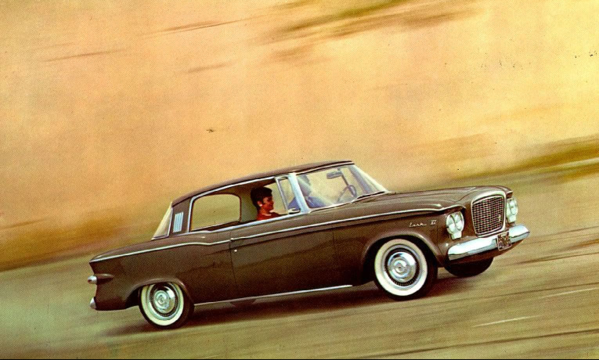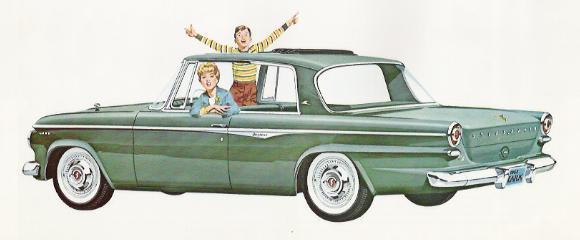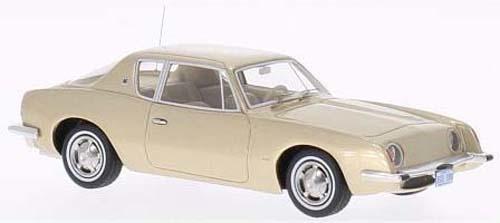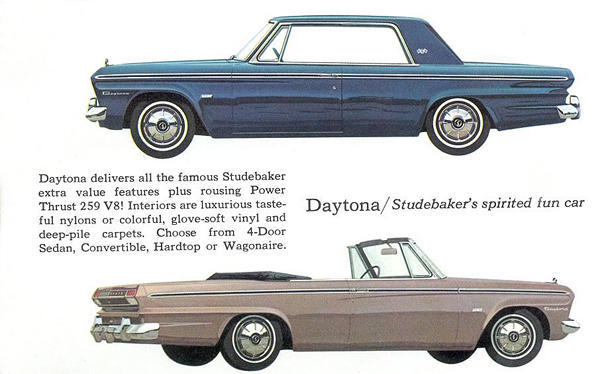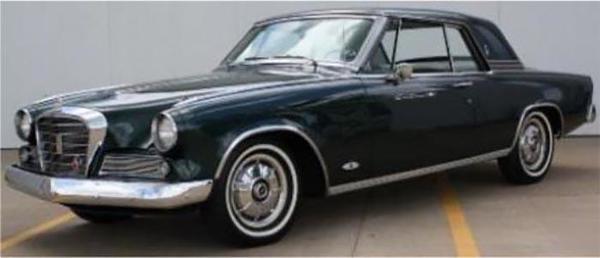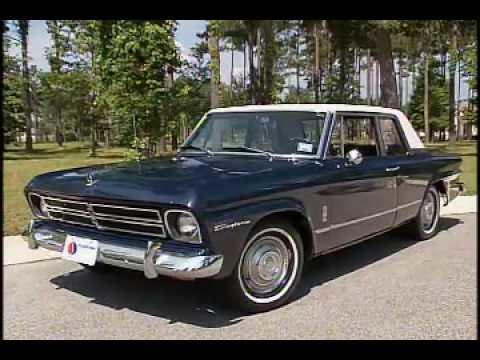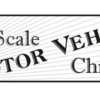Studebaker History Part IV The Final Years
By the end of 1960 Studebaker auto sales were down, but because of diversification the company was in good financial shape.
For 1961 Studebaker redesigned the Grille, windshield and the roof-line Fresh air intake was though cowl intakes instead of vents next to the grill. Because of trim changes they looked boxy. Studebaker built a long wheelbase 4 doors for years and the Lark was no exception. The first long wheelbase were marketed as taxes. In 1961 they offered an upscale Regal trimmed model as the Cruiser.
For 1962 they redesigned the entire rear of the car and also extended the front end a little with a grill mesh that resembled a Mercedes Benz. Along with some trim changes the car was much better styled. Starting this year all 4 doors got the long 113-inch wheelbase.
The ’62 Hawk’s 1953 body was restyled by Brook Stevens with trim changes and a square roof-line along with a return to a hard top body. This was an outstanding automobile
The 1963 Lark again a new more square windshield and minor trim changes. The Lark wagon was available with a sliding rear roof panel the allowed one to carry tall items.
The hawk received minor trim changes. The big news was the Avanti. It was essentially a Raymond Lowey designed fiberglass body on a Lark chassis. Andy Granatelli modified the engines. Those engines were available in Larks and Hawks.
For 1964 the Larks got a new front end and formal roof-line. The rear quarters were not changed but the trunk lid and rear panel was cleverly redesigned giving the car a totally new look. At the end of 1964 because sales continued to drop and a labor strike the management moved auto production to their plant in Hamilton Ontario Canada. Studebaker discontinued the Avanti, Hawks, Trucks, convertibles and hardtops.
The 1965 models were little changed. Because they closed the South Bend engine plant they purchased engines from GM of Canada.
Studebaker hired design firm of Marcks, Hazekquist & Powers was hired to redesign the 1966 models and with a tiny budget they managed to create a fresh looking re-style They developed styling for 1967 to 1969 as well. But Studebaker sales continued to drop and management pulled the plug. The last Studebaker rolled off the assembly line on March 5 1966.
Epilog
The Studebaker Corporation had other profitable divisions like Clark Floor Machines, Gravley Tractor and STP Corporation. They merged with Worthington and Wagner Electric in November 1967 to Form Studebaker-Worthington. Worthington had previously acquired American Locomotive. McGraw Edison took over Studebaker-Worthington in 1978
There are not many 1/43 models of the last Studebakers.
Brochure for 1961 Studebaker Lark
Brochure for 1962 Studebaker Lark Daytona
63 Studebaker Avanti by Best of Show
Brochure for Studebaker 1964 Lark
64 Studebaker Gran Turismo Hawk by Esval / Not yet available
Photo of a Studebaker Daytona





